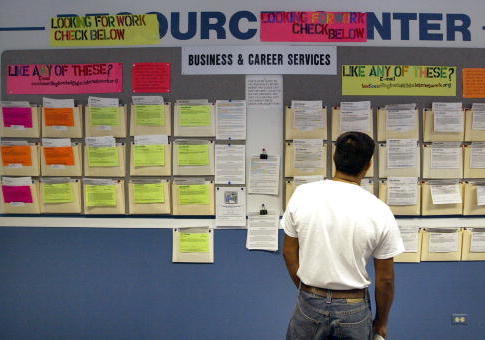Almost four-and-a-half million SNAP recipients would go to work under reforms currently making their way through Congress, estimates based on data from the Foundation for Government Accountability (FGA) show.
Proposed work requirements would cover about 12 million people according to FGA's data. There are approximately seven-and-a-half million SNAP recipients already working, meaning at least an additional four-and-a-half million who currently do not work would find themselves responsible for working, finding work, or taking advantage of federally funded education and training programs.
FGA's own estimates, offered to the Free Beacon, in fact peg the number higher, adding 7.8 million people to the workforce with new work requirements. This discrepancy is due to FGA's finding that not all able-bodied individuals enrolled in SNAP and working would be subject to the new work requirements. FGA's estimate deviates from the one given to the Free Beacon by experts on the House agriculture committee, who pinned the final total at between 5.5 and six million people.
These work requirements are part of a major overhaul of the Supplemental Nutrition Assistance Program—often referred to as "food stamps"—included in the most recent House agricultural bill.
Under current law, only a restricted group of SNAP recipients, about 8.8 percent, are expected to actively work or look for work. Under the proposed revision, any individual who is a) between the ages of 18 and 59, b) neither mentally nor physically disabled, and c) is not responsible for a child age six or under, would be obligated to spend 20 hours a week working, seeking work, or training.
There were about 42 million SNAP recipients as of the end of 2017, a 50 percent increase since 2008. That year, millions began joining SNAP roles thanks to the temporary unemployment spikes caused by the Great Recession. While unemployment has returned to pre-recession lows, SNAP enrollment remains high, having fallen only 11 percent since its 2013 peak.
FGA obtained information about SNAP enrollees from the U.S. Department of Agriculture, which maintains data from a nationally representative survey of recipients. By FGA's estimates, there are just over 20.5 million able-bodied adults. That number includes both people with and without children, and extends to 64-year-olds (unlike the new SNAP work requirement, which ends at 59).
Of that group, around 13 million are not working—doubtless including parents and those over the age of 59, but also likely some individuals not currently obliged to work or otherwise not actively seeking employment.
The rate of individuals not working varies by state. In Alaska and Kentucky, nearly three quarters of able-bodied adults don’t work. The lowest rate of SNAP-recipient unemployment is still greater than 50 percent: 52 percent of able-bodied Idahoan SNAP recipients do not work.
California, meanwhile, leads the nation in the number of new workers under expanded SNAP work requirements, with just under 700,000 people newly covered. Florida follows, with just under 500,000 new workers; Georgia, Illinois, and New York all clear 200,000. By contrast, the estimated number of people covered by the new work requirement is less than the number of able-bodied SNAP recipients currently working in three states: Idaho, Texas, and North Dakota.
It remains unclear if the proposed reforms, which have passed out of committee and now await a full vote on the House floor, will become law. If they do, however, they are likely to have a substantive impact on welfare rolls. FGA finds in its own analysis of work requirements in Kansas and Maine that enrollees cut their time on welfare in half and doubled their income thanks to the combination of requirements and job training.
Update: This story has been updated with more data from the FGA.
